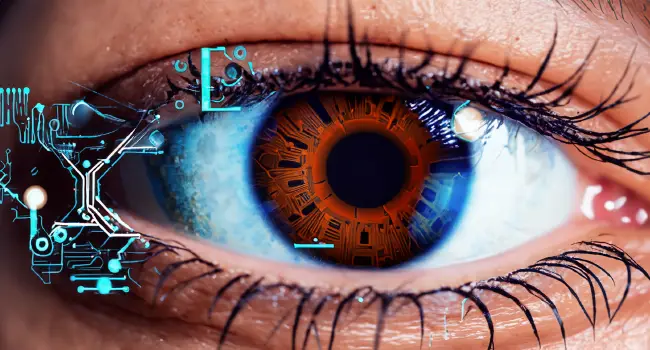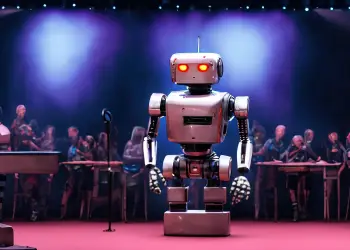Artificial Intelligence

One definition of artificial intelligence is offered by the Association for the Advancement of Artificial Intelligence -- "the scientific understanding of the mechanisms underlying thought and intelligent behavior and their embodiment in machines".
Another definition I found sums up artificial intelligence as: "intelligent behavior in machines".
Artificial intelligence, or AI for short, is a field of computer science that focuses on creating machines and computer programs that can perform tasks that would normally require human intelligence. These tasks include things like understanding natural language, recognizing images, and making decisions.
AI is composed of three parts: the hardware that executes the software, the software or program itself, and the data that the program will process to provide the desired output.
Categories of Artificial Intelligence
Artificial Narrow Intelligence (ANI): Also known as Weak Artificial Intelligence and Specialized AI, this refers to AI systems that are designed to perform specific tasks and do it very well, sometimes better than humans. Most of the AI applications available today are weak AI.
Artificial General Intelligence (AGI): This refers to Strong AI systems in development that are capable of human-like intelligence and can perform any intellectual task that a human can, equally as well, but not better than humans.
Artificial Super Intelligence (ASI): Artificial superintelligence is the advancement of an AI entity to the point where its intelligence passes that of humans in a wide variety of tasks. This type of AI would have a sense of self, write its own programming and use its own reasoning to accomplish goals.
Types of Artificial Intelligence
There are many types of artificial intelligence including:
Reactive machines: These AI systems are the simplest form of artificial intelligence. They analyze real-time data and process it the same way each time. Reactive AI machines do not have the ability to form memories or make decisions based on past experiences. Examples of reactive AI machines are email spam filters and IBM’s chess winner Deep Blue.
Limited memory: Limited memory AI systems are the next step up in artificial intelligence from reactive machines and for practical purposes, the current state of AI. These AI systems can use past experiences to make decisions, but their memory is limited, and they cannot form long-term memories. Examples of limited memory artificial intelligence include chatbots, voice assistants, and self-driving cars.
Theory of mind: These AI systems, currently in development, could understand and reason about human mental states and emotions. Theory of Mind systems would recognize that you are something different than itself, with a mind, thoughts, and needs different than its own. Perceiving a person’s emotions and intent are important aspects of communication between humans and AI.
Self-aware: The highest level of AI, and one that does not publicly exist yet, is a self-aware system, also called artificial super intelligence (ASI). These AI systems would have a sense of self and consciousness. An AI system that is self-aware could be the beginning of The Singularity, a scenario where artificial intelligence surpasses human intelligence, and continues to grow out of human control.
Branches of Artificial Intelligence
Branches (subfields) of AI include machine learning, deep learning and neural networks, natural language processing, generative AI, and computer vision.
Machine Learning: One of the most well-known subfields of AI is called machine learning. Machine learning is a type of AI that allows computers to learn from data, without being programmed to do so. For example, a machine learning program could process images of a wide variety of animals, and then be able to determine if an image has animals in it. Types of machine learning include supervised learning, unsupervised learning, semi-supervised learning, and reinforced learning.
Deep Learning and Neural Networks: Another important area of AI is called deep learning. Deep learning is a type of machine learning that uses neural networks to learn from data. Neural networks are a type of computer program that are inspired by the way the human brain works. They consist of layers of interconnected neurons, which are like tiny processing units that can learn to recognize patterns in data.
Natural Language Processing: Natural Language Processing (NLP) is a branch of AI that processes verbal communication from humans. This has been difficult because people speak in so many different ways. A live translator app on your phone is probably using NLP artificial intelligence to translate your conversations.
Generative AI: Generative AI has been in the news lately with the introduction of the ChatGPT and Dall-E AI algorithms. ChatGPT (Chat Generative Pre-trained Transformer) is a chatbot that can generate code, create music, as well as student essays. Dall-E does the same for images and art. It is easy to imagine how much this will affect society in good and bad ways, as the technology improves.
Computer Vision: A field of AI that deals with how computers can interpret and understand visual information it receives from the world, such as images and videos. Autonomous vehicles scanning the street for pedestrians and X-ray analysis are two examples of computer vision applications.
How is AI Being Used Today?
Narrow AI is used in many different industries. Some examples include robotics, self-driving cars, chatbots, virtual personal assistants like Siri and Alexa, and customer service. It's also being used in new and innovative ways, such as in the development of robots that can work in hazardous environments and in improving financial trading decisions.
AI is also being used to help solve some of the world's most pressing problems. For example, scientists are using AI to analyze satellite images to track deforestation, and to help doctors diagnose and treat diseases like cancer.
Overall, AI is a rapidly growing field with a lot of potential. It has the ability to make our lives easier and to help us solve some of the world's problems. However, it's important to remember that AI is a tool, and like any tool, it can be used for good or for bad. So, it's important to make sure that we use AI responsibly, ethically, and for the good of all.

The Singularity
The technological singularity, often shortened to simply "the singularity," is a hypothetical future event where technological advancement accelerates beyond our ability to comprehend or control it. It's essentially a point of no return, where artificial intelligence surpasses human intelligence and triggers a runaway effect of rapid, transformative change.
Futurists give varying predictions as to the date, cause and likelihood of such an event, ranging from 2045 to 2100.

Chatbots
A chatbot is a computer program that is designed to simulate an intelligent conversation with humans. Many chatbots use machine intelligence, natural language processing (NLP), and large language models to interpret speech or text input prior to providing an appropriate response. Some simply scan for keywords within the input and pull a matching reply from a database. Chatbots can be integrated into messaging apps, websites, and even voice assistants like Amazon's Alexa or Apple's Siri.

Artificial Humor
Artificial intelligence developers are taking satire seriously because humor is an important aspect of improved interaction between humans and computers.
AI Articles and Web Sites
I search the internet daily for new articles from around the world that interest me or I think will interest you. My hope is that it saves you time or helps students with their assignments. Listed by most recent first, dating back to 2005.
-
The list below is maintained by a human. In your face, machine learning! - Jack
-
From chatbots to intelligent toys: How AI is booming in China from BBC
-
This Microsoft AI Studied 7 Years of Video-Game Play. Now It Dreams Up Whole New Game Scenarios. from Singularity Hub
-
DeepSeek is just the start of the artificial intelligence transformation from Clemson News
-
Dr. Winston Ewert: The Limits of Artificial Intelligence from Mind Matters
-
Artificial news: How to create an AI anchor – video from The Guardian
-
Building trust in artificial intelligence from University at Buffalo
-
What Is an AI Agent? A Computer Scientist Explains the Next Wave of AI Tools from Singularity Hub
-
What is an AI Ethicist and How Do I Become One? from Brad Hook
-
The rise of ‘AI agents’: What they are and how to manage the risks from WEF
-
Veo 2 state-of-the-art video generation model from Google
-
Boss Of AI Nick Bostrom On Future Of Artificial Intelligence video
-
Ex-Google CEO warns there's a time to consider unplugging AI systems from Axios
-
Nobel recipient Geoffrey Hinton wishes he thought of AI safety sooner from CTV News
-
How artificial intelligence is changing the game for weather forecasting video
-
Meet an NVIDIA Deep Learning Engineer Helping Shape the Future of AI from NVIDIA
-
Google Project Astra: Our vision for the future of AI assistants video
-
PlayStation co-CEO spits out a bizarre prediction about the future of AI and gaming—one I pray never happens from PC Gamer
-
OpenAI’s GPT-4o Makes AI Clones of Real People With Surprising Ease from Singularity Hub
-
New AI tool generates realistic satellite images of future flooding from MIT News
-
How close are we to an accurate AI fake news detector? from The Conversation
-
The Brains Behind Today’s AI Revolution from UC San Diego Today
-
Are we on the verge of a self-improving AI explosion? from Ars Technica
-
Why deepfakes pose less of a threat than many predict from Psyche
-
Tech bosses think nuclear fusion is the solution to AI’s energy demands – here’s what they’re missing from The Conversation
-
Small Steps, Giant Leaps: Episode 140: Artificial Intelligence from NASA
-
Debate empowers human over artificial intelligence, authors argue from The University of Kansas
-
Replacing hype about artificial intelligence with accurate measurements of success from ScienceDaily
-
AI will never be our friend from University Daily Kansan
-
Due to AI fakes, the deep doubt era is here from Ars Technica
-
What is 'model collapse'? An expert explains the rumours about an impending AI doom from ABC Australia
-
Digital Humans: The future of customer service from CBS Austin
-
Artificial intelligence, real anxiety: Why we can't stop worrying and love AI from ZDNet
-
How intelligent is AI? from Aeon
-
This is AI's brain on AI from Axios
-
This Is What Could Happen if AI Content Is Allowed to Take Over the Internet from Singularity Hub
-
OpenAI reportedly nears breakthrough with reasoning AI, reveals progress framework from Ars Technica
-
Research shows AI can boost creativity for some, but at a cost from NPR
-
Unmasking the Fear of AI’s Energy Demand from The Breakthrough Institute
-
Artificial intelligence web crawlers are running amok from NPR
-
AI Evolution: What is a Large Language Model? from St John's University
-
What is artificial general intelligence? from ZDNet
-
Planning for AGI and beyond from OpenAI
-
Nvidia's next-gen DLSS may leverage AI — tech will be able to generate in-game textures, characters, and objects from scratch from Tom's Hardware
-
Claude, Anthropic's ChatGPT rival, has many scruples from Axios
-
Artificial Intelligence 101: Understanding the power of AI and its dangers from 6abc
-
OpenAI forms safety council as it trains latest artificial intelligence model from The Guardian
-
Machine Learning vs. Deep Learning: What's the Difference? from Gizmodo
-
AI Can Now Generate Entire Songs on Demand. What Does This Mean for Music as We Know It? from Singularity Hub
-
Ethics and equity in the age of AI from Vanderbilt University
-
Artificial intelligence expert's DIRE warning to white-collar workers - 'You should be worried!' video
-
Humans Rate Artificial Intelligence as More ‘Moral’ Than Other People from Georgia State University
-
New AI for a new era of discovery from Arizona State University
-
Innovating with AI from Montana State University
-
The transformative power of generative artificial intelligence for the public sector from AWS
-
AI - Harnessing the Machine from Vanderbilt University
-
Researchers warn of unchecked toxicity in AI language models from CTV
-
Miss AI Pageant from The World AI Creator Awards
-
The ethics of advanced AI assistants from Google DeepMind
-
To understand the risks posed by AI, follow the money from The Conversation
-
Artificial augmented creativity: A new era of art from ETH Zurich
-
The hidden risk of letting AI decide – losing the skills to choose for ourselves from The Conversation
-
How to develop ethical artificial intelligence from Harvard Gazette
-
How will AI change our world? from University of Toronto
-
AI gives, even as it takes away jobs from Gadget
-
OpenAI reveals artificial intelligence tool to re-create human voices from Axios
-
AI agents could do real work in the real world. That might not be a good thing. from Vox
-
How does artificial intelligence (AI) work in simple terms? from Geeky Gadgets
-
The dangers of AI farming from Aeon
-
How I learned to stop worrying and love AI from The Harvard Gazette
-
Stanford HAI at Five: Pioneering the Future of Human-Centered AI from Stanford University
-
Why can’t anyone agree on how dangerous AI will be? from Vox
-
What is general intelligence in the world of AI and computers? The race for the artificial mind explained from PC Gamer
-
Frontier AI ethics from Aeon
-
AI Can Design Totally New Proteins From Scratch—It’s Time to Talk Biosecurity from Singularity Hub
-
The desperate race to save Generative AI from Gary Marcus
-
The most powerful AI processing supercomputer in the world is set to be built in Germany from PC Gamer
-
Sam Altman: Age of AI will require an ‘energy breakthrough’ from Popular Science
-
All hail RT-X: The global project aimed at creating an AI mega brain for all robotkind from PC Gamer
-
A glimpse of the next generation of AlphaFold from Google Deep Mind
-
Thousands of AI experts are torn about what they’ve created, new study finds from Vox
-
An ethical, responsible approach to AI from MPR News
-
AI ethics keeps falling by the wayside from TechCrunch
-
TinEye Reverse Image Search website
-
How Artificial Intelligence Can Personalize Education from IEEE Spectrum
-
Mistral AI website
-
Combining biomimicry with artificial intelligence technology from Arizona State University
-
Imagine Ai image generator from Meta
-
AI and environmental challenges from Penn Today
-
AI Still Isn't as Smart as Your Dog: Top Meta Scientist from Decrypt
-
Can Artificial Intelligence Help Us Become Less Lonely? from Greater Good Magazine
-
What does the future hold for generative AI? from MIT News
-
The fear and hype around AI is overblown from Computer World
-
DeepMind Defines Artificial General Intelligence and Ranks Today’s Leading Chatbots from Singularity Hub
-
AI doesn’t cause harm by itself. We should worry about the people who control it from The Guardian
-
People disagree about the risks and benefits of artificial intelligence from NPR
-
Thousands Ghosted By Their AI Girlfriends After Company CEO Jailed from NDTV
-
Meta brings us a step closer to AI-generated movies from Tech Crunch
-
Breaking down the science of AI with Yejin Choi from GatesNotes
-
Researchers Warn We Could Run Out of Data to Train AI by 2026. What Then? from Singularity Hub
-
Trailblazing computer scientist Fei-Fei Li on human-centered AI from NPR
-
How artificial intelligence could upend global financial stability from Axios
-
AI is about to completely change how you use computers from Gates Notes
-
Balancing the risks and rewards of AI will be key from The Guardian
-
Llama 2 open source large language model from Meta
-
Model Collapse: AI Chatbots Are Eating Their Own Tails from Mind Matters
-
I went to paradise to see the future of AI, and I’m more confused than ever from The Verge
-
Like Humans, This Breakthrough AI Makes Concepts Out of the Words It Learns from Singularity Hub
-
Humanity at risk from AI ‘race to the bottom’, says tech expert from The Guardian
-
A day in the life of AI from The Guardian
-
Human brain’s ‘temporal scaffolding’ inspires new AI approaches from University of Rochester
-
‘Video games are in for quite a trip’: How generative AI could radically reshape gaming from CNN
-
AI just got 100-fold more energy efficient from Northwestern University
-
AI on Track to Gobble Up as Much Energy as a Country, Study Finds from Gizmodo
-
Is AI in the eye of the beholder? from MIT News
-
The era of AI: Transformative AI solutions powering the energy and resources industry from Microsoft
-
Spotify uses AI to clone and translate podcaster voices in new pilot program from Ars Technica
-
‘You and AI:' How artificial intelligence impacts entertainment from NBC 5 Chicago
-
Can artificial intelligence make decisions like humans? from The Varsity
-
Watch Generative AI Design a Customized Protein in Seconds from Singularity Hub
-
OpenAI’s Moonshot: Solving the AI Alignment Problem from IEEE Spectrum
-
AI: The good, the bad and the future from Colorado State University
-
Growing public concern about the role of artificial intelligence in daily life from Pew Research Center
-
Google tests watermark to identify AI images from BBC News
-
Dezeen In Depth examines the environmental cost of artificial intelligence from Dezeen
-
The scary (and weird) world of artificial intelligence from San Antonio Report
-
AI cannot taste the way a chef can: are chatbots a threat to fine dining? from The Guardian
-
Why we should worry less about ‘sentient’ AIs and more about what we’re teaching them from Aeon
-
What is AI Takeoff? from IoT For All
-
Movie extras worry they'll be replaced by artificial intelligence from NPR
-
Can you trust AI? Here’s why you shouldn’t from The Conversation
-
Giving AI a Sense of Empathy Could Protect Us From Its Worst Impulses from Singularity Hub
-
What's next for artificial intelligence? from SDPB
-
The risks of AI are real but manageable from Gates Notes
-
Apocalypse not now? AI’s benefits may yet outweigh its very real dangers from The Guardian
-
Change your singing voice using AI from Voice Swap
-
AI is an existential threat – just not the way you think from The Conversation
-
DeepMind’s Gemini: The Future of AI Technology from readwrite
-
The folly of making art with text-to-image generative AI from The Conversation
-
RoboCat: A self-improving robotic agent from Google Deep Mind
-
The big idea: Will AI make us stupid? from The Guardian
-
The Who, Where, and How of Regulating AI from IEEE Spectrum
-
Flawed chatbot or threat to society? Both? We explore the risks and benefits of AI from NPR
-
What is AI, is it dangerous and what jobs are at risk? from BBC News
-
Is artificial intelligence advancing too quickly? What AI leaders at Google say from CBS News

